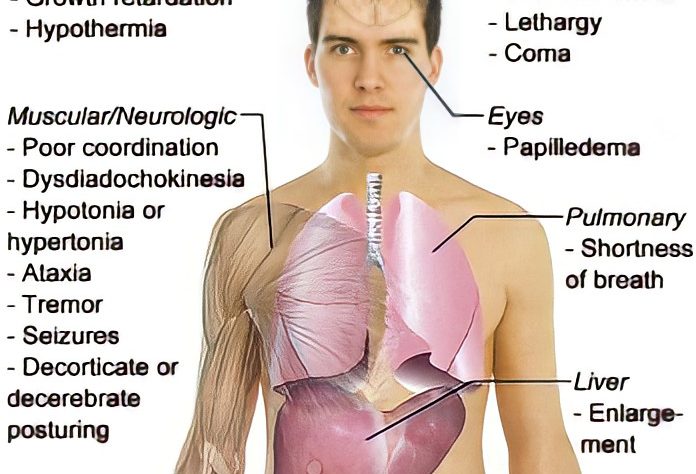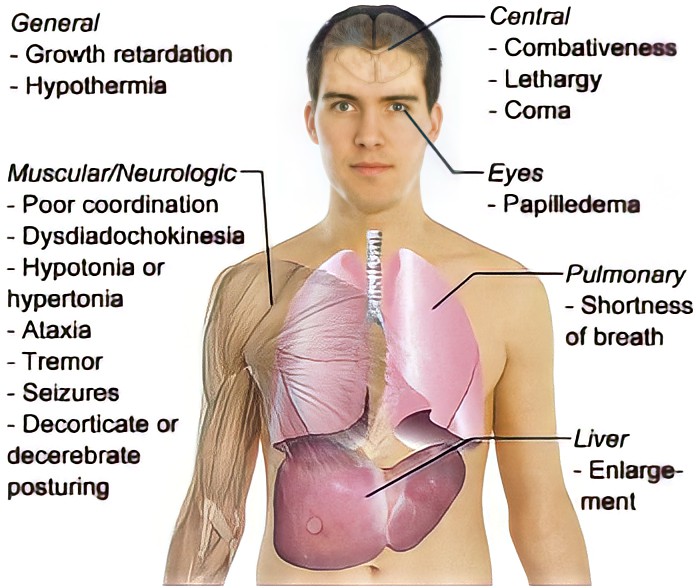Mohammed Arif
Faculty of Pharmacy – TIU – Erbil
Allan and colleagues first identified argininosuccinic acidemia in 1958. It gets its name from the fact that affected people’s blood contains a great amount of argininosuccinic acid. Because of the increased excretion of argininosuccinic acid in urine, this condition is also known as argininosuccinic aciduria, and argininosuccinate lyase deficiency, which refers to an enzyme deficiency and It is an autosomal recessive condition called argininosuccinic aciduria. Alterations (mutations) in the ASL gene cause argininosuccinic aciduria.
Argininosuccinic aciduria is an inherited disorder that causes ammonia to accumulate in the blood. Ammonia, which is formed when proteins are broken down in the body, is toxic if the levels become too high. The nervous system is especially sensitive to the effects of excess ammonia, and due to a near complete or partial lack of the enzyme argininosuccinatelyase, symptoms of argininosuccinic aciduria develop. The ASL gene is in charge of controlling the enzyme’s activity. Low levels of functional argininosuccinatelyase, which is needed to break down nitrogen in the body, are caused by mutations in the ASL gene. Failure to adequately break down nitrogen results in an excessive buildup of nitrogen in the blood in the form of ammonia (hyperammonemia).
Symptoms
Argininosuccinic aciduria usually becomes evident in the first few days of life and affects approximately 1 in 70,000 newborns. Symptoms of argininosuccinic aciduria include:
- Lethargy
- Loss of appetite
- Erratic breathing
- Poorly controlled body temperature
- Seizures
- Coma
- Hepatomegaly
- Hypotonia
- Apnea
If argininosuccinic aciduria is not treated soon it may cause:
- Delays in physical development
- Intellectual disability
- Ataxia
- Liver damage
- Skin lesions
- Brittle hair
Diagnosis
Elevated levels of argininosuccinic acid in blood or urine samples may be used to confirm a diagnosis. The condition is diagnosed during newborn screening via a heel prick test taken 48-72 hours after birth, which detects the gene alteration that causes the disorder. When symptoms are present, a diagnosis may be made.
We can diagnose by:
- Elevated plasma Ammonia Concentration more than 100 Mmol/L
- Elevated Plasma Citrulline 100-300 Mmol/L
- Elevated Argininosuccinic acid in plasma or in urine
Treatment
Treatment of argininosuccinic aciduria may include:
- A high-calorie,
- Protein-restrictive diet,
- Arginine supplementation,
- Administration of sodium benzoate
- Sodium phenylacetate.
- Dialysis may be necessary for some with the disease
References
1-AUTHORS:Matthias Zielonka MD, Stefan Kolker MD
https://medlink.com/articles/argininosuccinic-acidemia
2-Many text books
3-https://mdda.org.au/diagnosis/asa/



